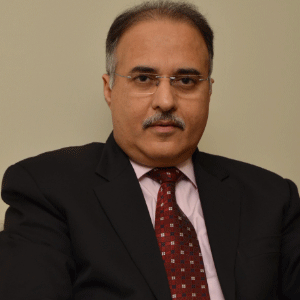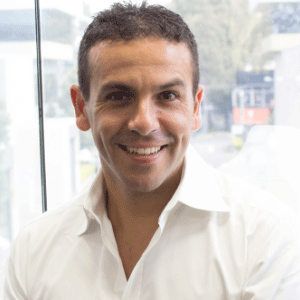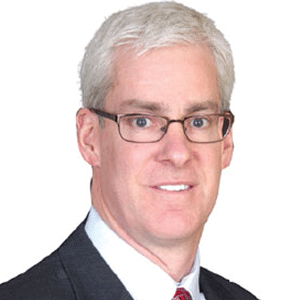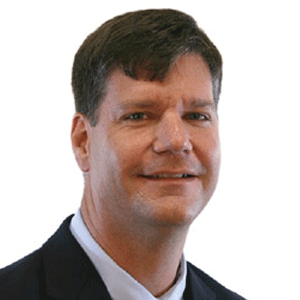THANK YOU FOR SUBSCRIBING

Utility was Yesterday, Tomorrow is Internet of Electricity!
Mathias Steck, Vice President, DNV GL


Mathias Steck, Vice President, DNV GL
While today we discuss how to integrate the rapidly growing intermittent Renewables Generation, and how Disruptive Technologies such as Distributed Generation, Storage, and Electric Vehicles will reduce the value share of utilities in the electricity system, on the horizon one can already adumbrate the next big thing beyond: ‘BIG DATA’..
Big Data undeniably will be a complete game changer. With the roll out of Substation Automation Systems, GIS Integration, Distribution Automation, Smart Homes, Phase Measurement Units (PMU), Machine-to-Machine (M2M) communication, etc., we expect the annual rate of data intake to increase by at least factor 20 over the next years.
The future of the electricity ecosystem will look like a Mandelbrot fractal, forming an intelligent ‘plug and play’ electricity grid in which every device down to our solar cells on the roof, and our coffee machines in the kitchen can communicate and adapt for an overall optimized generation, grid and demand performance.
The major technology providers already introduce Virtual Power Plant (Bosch), Decentralized Energy Management System (SIEMENS), Symphony Plus (ABB), Digital Power Plant (GE), Home Energy Management Systems (Samsung) – to name a few. Standards such as IEC 60870-5-101, IEC 60870-5-104, and IEC 61850 in Europe, or the Distributed Network Protocols DNP 3 and DNP3i in the US, are defining the foundation of what will become the Internet of Things (IOT) in the electricity space. Maybe let’s call it the Internet of Electricity, a term the US Department of Energy is using for their major new initiative to inform and support modernization of the electric grid that would enable the grid to carry increasing volumes of renewable power, and distributed generation, while achieving higher levels of security and resilience.
My vision here is going even further though: Machine Learning algorithms will do the heavy lifting in the background including Renewable Generation Forecasting, Grid Management, Pro and Consumer demand forecasting and optimization, Intrusion Detection, etc. Smart Apps will provide Prosumers and Consumers with highly transparent real time information of their consumption, cost, and if the case may be self generation, and allow them to optimize asset lifetime and performance, electricity cost, or anything else you can think of with the push of a button, thus resulting in other assets in the grid automatically adjusting their operations to adapt to this new scenario.
The future of the electricity ecosystem will look like a Mandelbrot fractal, forming an intelligent ‘plug and play’ electricity grid
The Internet of Electricity will be the King; sitting in the centre connecting any kind of grid assets with each other, as well as with, for example, application servers and a cloud based integrated system supervision and optimization process.
This will shake up things substantially. The technical challenges are one thing relatively easy to solve. Energy Markets will need to be adopted too and there will be new services which need a price, i.e. reliability of power supply and provision of ancillary services such as synthetic inertia from wind turbines to stabilize the grid frequency. The big challenge is that this integrated approach will obviously need to cut across the entire value chain from generation to use, with the target to optimize the system performance rather than the individual asset. This comes with a shift from a ‘provide services to an end-user’ to a ‘user in the centre’ approach. In the extreme case no human interaction will be required anymore on the generation, transmission and distribution side. Most of the utilities would therefore, if they remain in their current setup, degenerate to commodity providers providing maintenance to the assets they own (or are contracted to look after). Their value share in the Internet of Energy would be marginal, and it does not appear to be ludicrous to assume that Data Power Houses like Alphabet (Google), Microsoft and Apple or alike all have a very good chance to be the main power in the electricity industry soon providing the platform, including communication, data storage, data analysis, process control, reporting, billing, user interfaces, etc.
So what to do if you are a utility? No one really knows today how things will exactly look like in future. Also, there will most probably be some evolutionary (and costly) iteration until we have truly entered into the new era outlined above.
What is left to remain relevant is accepting the change to come, it will happen, and it will probably bring with it a consolidation of the utility sector and we will see takeovers and mergers happen between utilities and Information, Communication and Technologies (ICT) firms.
To stay in the game today and in the future, the utilities need to adopt new business models (Renewable/Distributed Generation, Solar Rooftop, and Storage, related Leasing Models etc.) and get prepared for a future some describe with the term VUCA (volatile, uncertain, complex, and ambiguous). The shift to the next era of the electricity sector will be a fast moving evolution. To respond to this requires hiring and working with a new breed of experts and to internalize core capabilities. There is no time to repeat mistakes others made or to reinvent the wheel. Equally important is to change the company culture and cascade the vision of the future down form Top Management to every employee. The evolution must be initiated top down but incorporated bottom up to succeed. On the way to reach that point pilot projects are a good idea; directly addressing improvement of services requested by the consumer. The challenge then is to develop a solution that cannot be easily replicated by the competition. The focus must be to move away from earning money from the generation, transmission and distribution of electricity, and steer towards making money from the provision of services to provide the quality of supply required by the individual consumer. There is an Energy Revolution ahead. And as the notorious Computer Scientist - Alan Kay famously once said: “the best way to predict the future is to invent it.”
Weekly Brief
I agree We use cookies on this website to enhance your user experience. By clicking any link on this page you are giving your consent for us to set cookies. More info
Read Also













